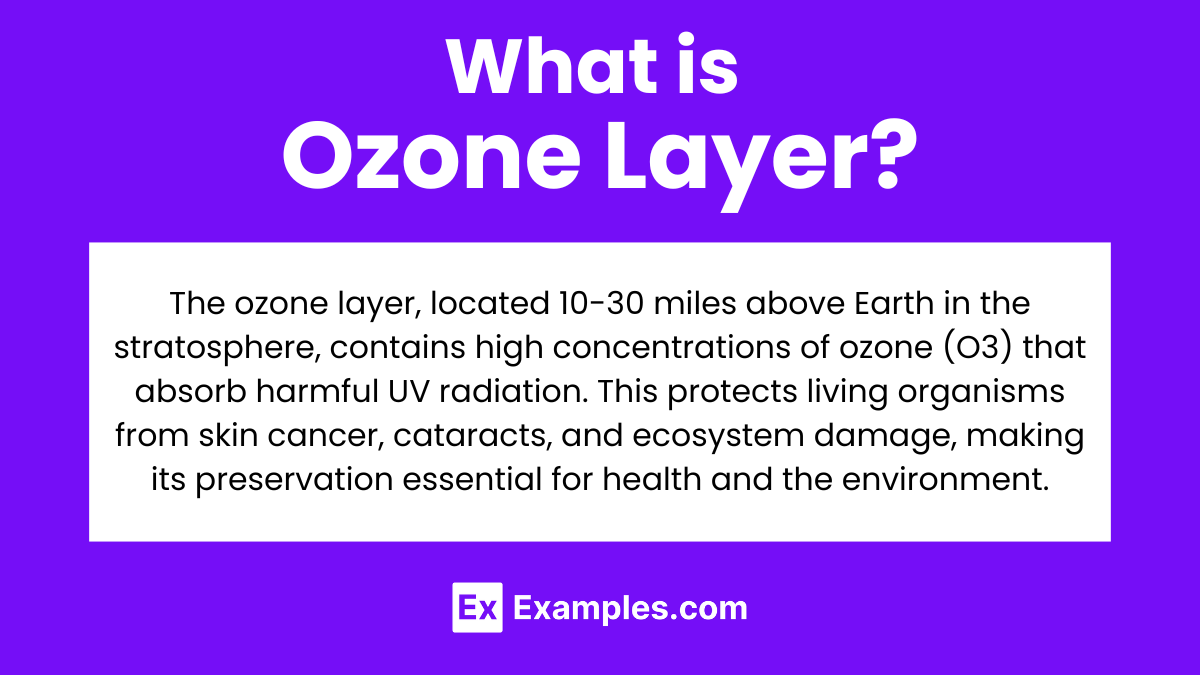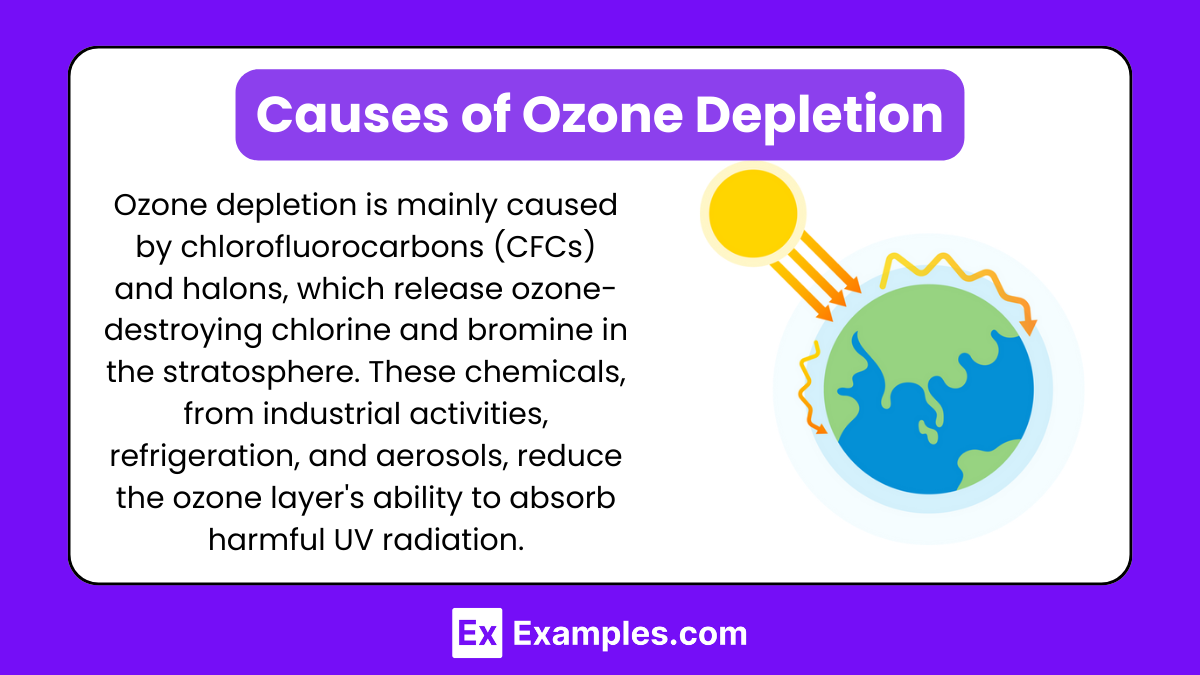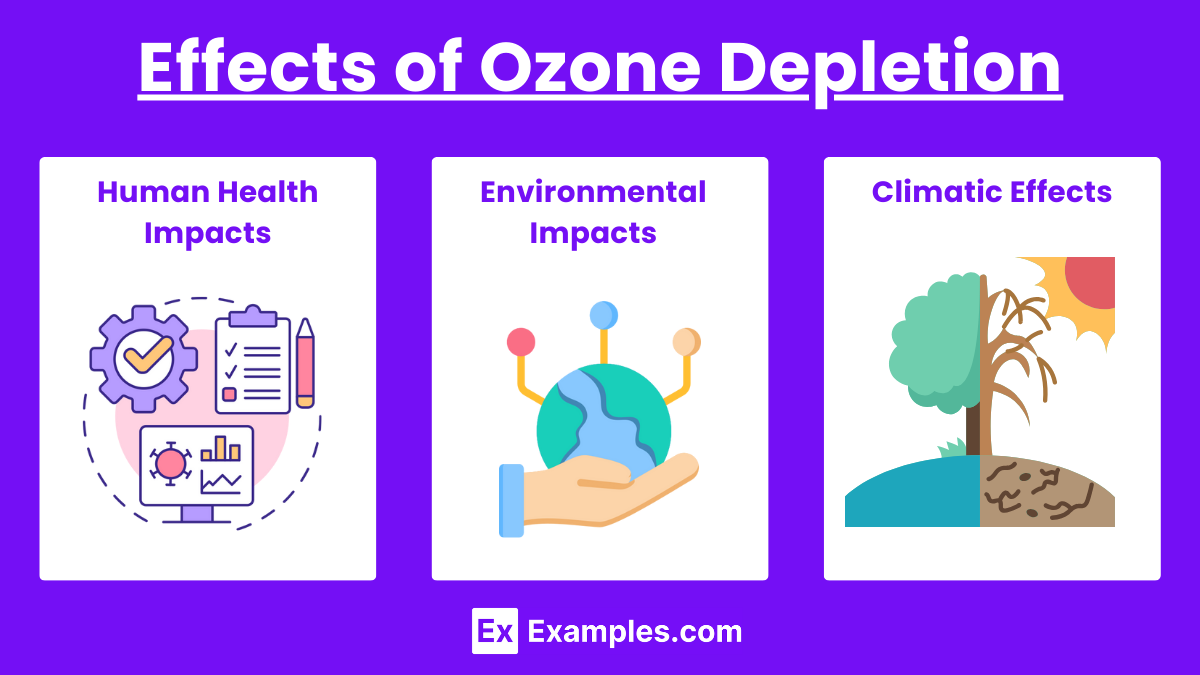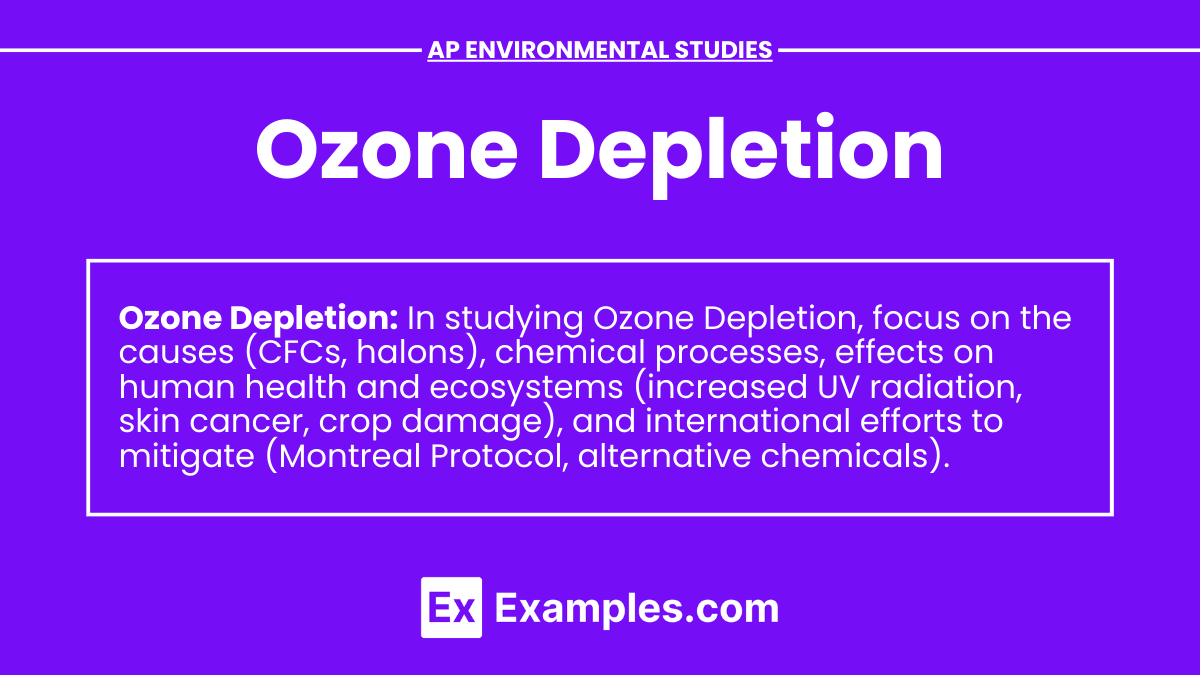In AP Environmental Science, understanding ozone depletion is crucial as it impacts ecology, ecosystems, biodiversity, and the biosphere. The thinning of the ozone layer allows more harmful ultraviolet (UV) radiation to reach Earth, affecting human health and disrupting natural processes. This increase in UV radiation can lead to higher skin cancer rates, harm biodiversity, and disrupt the balance of ecosystems, highlighting the importance of protecting our biosphere.
Learning Objectives
By studying ozone depletion, students will understand its impact on organisms, how it contributes to climate changes, and affects flora and fauna. They will learn about the chemical processes that deplete the ozone layer, the sources of ozone-depleting substances, and international efforts to mitigate these effects. Additionally, students will explore the ecological consequences of increased UV radiation on organisms, including harm to flora and fauna, and the broader implications for climate changes.
Structure and Function of the Ozone Layer
What is the Ozone Layer?

- Composition: The ozone layer is composed of ozone (O₃) molecules.
- Location: Found in the lower stratosphere, about 10-30 km above Earth’s surface.
- Function: Absorbs and scatters the majority of the sun’s harmful UV radiation, particularly UV-B and UV-C rays.
Importance of the Ozone Layer
- Protects Life: Shields living organisms from excessive UV radiation, which can cause skin cancer, cataracts, and immune system suppression.
- Preserves Ecosystems: Protects terrestrial and aquatic ecosystems, including phytoplankton, which form the basis of aquatic food webs.
- Prevents Climate Change: Helps regulate temperature and weather patterns.
Causes of Ozone Depletion

Chlorofluorocarbons (CFCs)
- Sources: Used in refrigeration, air conditioning, foam blowing agents, and aerosol propellants.
- Mechanism: CFCs release chlorine atoms when broken down by UV radiation, which then deplete ozone molecules.
Halons
- Sources: Fire extinguishers and some industrial processes.
- Mechanism: Release bromine atoms, which are even more effective at depleting ozone than chlorine.
Other Ozone-Depleting Substances (ODS)
- Carbon Tetrachloride: Used in industrial processes and as a cleaning agent.
- Methyl Chloroform: Used as a solvent and in the production of adhesives and coatings.
- Methyl Bromide: Used as a pesticide and fumigant.
Mechanism of Ozone Depletion
Chemical Reactions
- UV radiation breaks down ODS, releasing chlorine and bromine atoms.
- Chlorine and bromine atoms react with ozone (O₃) molecules, converting them to oxygen (O₂).
- This reaction depletes ozone molecules, reducing the overall concentration of ozone in the stratosphere.
Seasonal and Geographical Variations
- Polar Regions: Experience more severe depletion, particularly over Antarctica, forming the “ozone hole” during spring.
- Mid-Latitudes: Also affected but to a lesser extent compared to polar regions.
Effects of Ozone Depletion

Human Health Impacts
- Skin Cancer: Increased exposure to UV-B radiation raises the risk of skin cancers, including melanoma and non-melanoma types.
- Eye Damage: Higher UV levels can lead to cataracts and other eye disorders.
- Immune System Suppression: UV radiation can weaken the immune system, reducing the ability to fight infections.
Environmental Impacts
- Marine Ecosystems: UV radiation affects phytoplankton, reducing productivity and impacting the entire marine food web.
- Terrestrial Plants: UV exposure can impair photosynthesis, reducing crop yields and affecting plant growth.
- Amphibians: Sensitive to UV radiation, leading to population declines due to increased mortality and developmental issues.
Climatic Effects
- Climate Change: Although ozone depletion primarily affects UV radiation, it also influences climate patterns by altering the stratospheric temperature balance.
International Response and Recovery Efforts
Montreal Protocol
- Adoption: Signed in 1987, it is a landmark international treaty aimed at phasing out the production and use of ODS.
- Amendments: Several amendments have strengthened the protocol, including the London (1990), Copenhagen (1992), and Kigali (2016) amendments.
Phasing Out ODS
- CFCs and Halons: Gradually replaced by less harmful alternatives like hydrofluorocarbons (HFCs), although some HFCs also contribute to climate change.
- Methyl Bromide: Use restricted with exceptions for critical uses where no alternatives exist.
Monitoring and Research
- Satellite Observations: Continuous monitoring of the ozone layer using satellites like NASA’s Aura and ESA’s Copernicus.
- Ground-Based Measurements: Use of Dobson spectrophotometers and other instruments to track ozone concentration.
- Research Initiatives: Ongoing research to understand ozone dynamics and develop new technologies to replace ODS.
Successes and Challenges
- Recovery Signs: Evidence suggests that the ozone layer is gradually recovering due to the effective implementation of the Montreal Protocol.
- Remaining Challenges: Illegal production of ODS, climate change interactions, and the need for alternatives to HFCs.
Personal and Community Actions
Reducing ODS Use
- Choosing Alternatives: Using products that do not contain ODS, such as HFC-free refrigeration and air conditioning systems.
- Proper Disposal: Ensuring proper disposal and recycling of appliances containing ODS to prevent releases.
Supporting Policies
- Advocacy: Supporting policies and regulations that aim to reduce ODS and promote the recovery of the ozone layer.
- Education: Raising awareness about the importance of the ozone layer and the impact of ODS.
Sun Protection
- Protective Measures: Using sunscreen, wearing protective clothing, and avoiding excessive sun exposure to minimize UV radiation risks.


